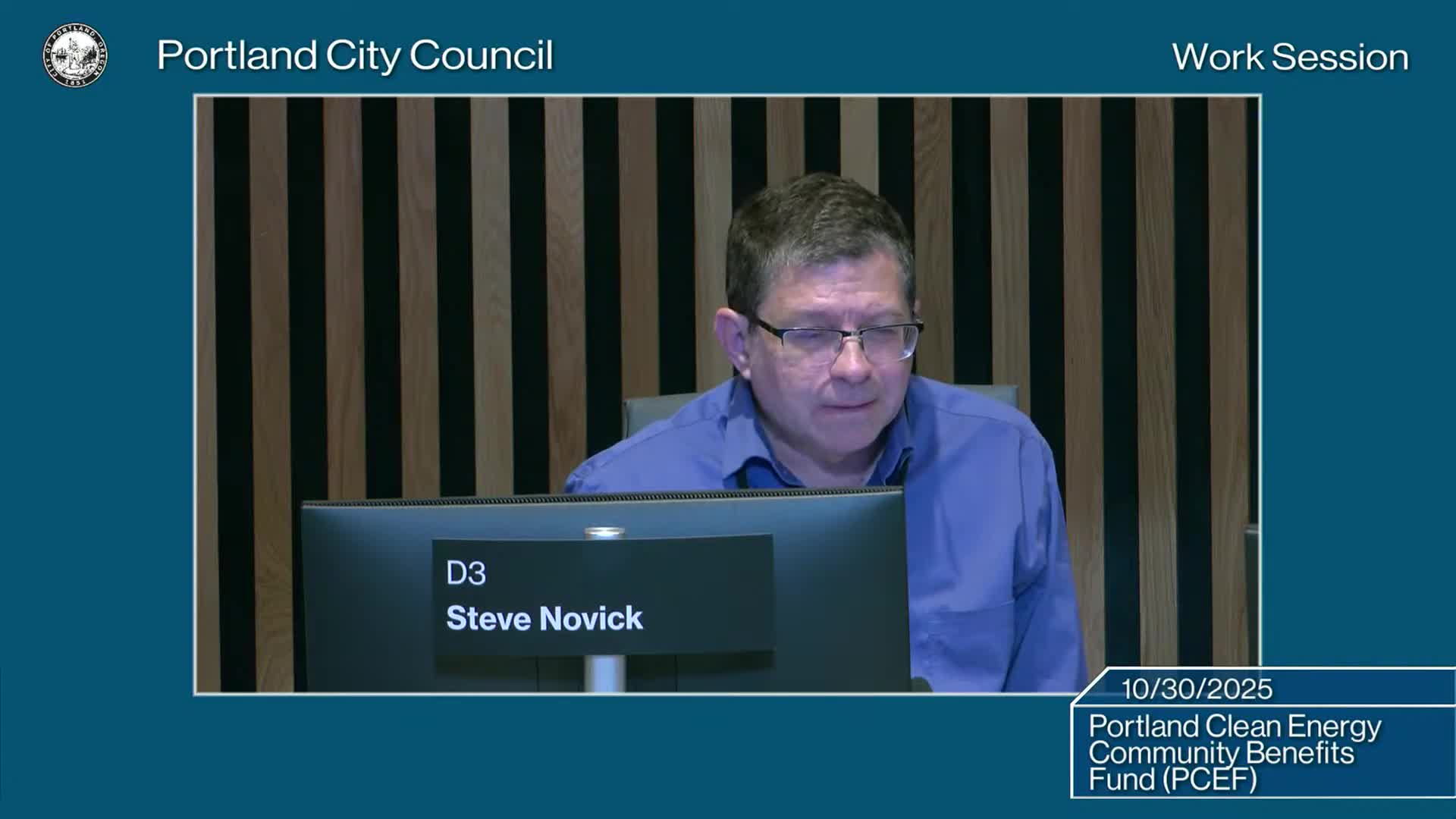Council questions a roughly $120M PCEF allocation for school infrastructure as staff outline distribution approach
October 31, 2025 | Portland, Multnomah County, Oregon
This article was created by AI summarizing key points discussed. AI makes mistakes, so for full details and context, please refer to the video of the full meeting. Please report any errors so we can fix them. Report an error »

Portland — PCEF staff told the City Council on Oct. 30 that approximately $120 million of the five‑year Climate Investment Plan is allocated to public school districts serving students within the city limits.
How it came about: Sam Brasso said the school funding first appeared in the climate investment plan after a multi‑month community engagement process in which schools and community members raised building infrastructure as a priority. A second tranche of school funding followed the PCEF “Collaborating for Climate Action” funding opportunity in which districts submitted coordinated proposals for building upgrades and resilience projects.
Distribution approach: Staff said the allocation uses an equity‑oriented distribution formula designed to steer funds toward higher‑need districts. “We did have a more equity oriented formula for distributing funding. It was based on essentially percentage of kids on free and reduced lunch,” staff told council. Staff also said the three remaining rounds of community grants in this CIP are expected to be part of how additional school‑related work is funded.
Council questions: Councilors asked whether some districts could have used bond capacity or other funds for upgrades and whether the allocation favored Portland Public Schools because of size. Staff said Portland Public Schools receives the largest share in absolute terms because it serves the largest number of students inside the city, but that East Portland districts and higher‑need schools received proportionately more on a per‑need basis under the equity formula. Staff offered to provide a detailed district‑by‑district distribution chart on request.
Why it matters: Councilors said schools are community hubs that can double as resilience centers and that PCEF investments in HVAC, cooling, shading and energy upgrades may have both climate and classroom benefits. Staff said that some funding will be used for planning and that additional rounds of grants are intended to support both planning and implementation.
Provenance: Staff discussion and council questions on school allocations took place during the Q&A portion of the Oct. 30 work session (topic intro block_3716.94; topic finish block_3824.78).
How it came about: Sam Brasso said the school funding first appeared in the climate investment plan after a multi‑month community engagement process in which schools and community members raised building infrastructure as a priority. A second tranche of school funding followed the PCEF “Collaborating for Climate Action” funding opportunity in which districts submitted coordinated proposals for building upgrades and resilience projects.
Distribution approach: Staff said the allocation uses an equity‑oriented distribution formula designed to steer funds toward higher‑need districts. “We did have a more equity oriented formula for distributing funding. It was based on essentially percentage of kids on free and reduced lunch,” staff told council. Staff also said the three remaining rounds of community grants in this CIP are expected to be part of how additional school‑related work is funded.
Council questions: Councilors asked whether some districts could have used bond capacity or other funds for upgrades and whether the allocation favored Portland Public Schools because of size. Staff said Portland Public Schools receives the largest share in absolute terms because it serves the largest number of students inside the city, but that East Portland districts and higher‑need schools received proportionately more on a per‑need basis under the equity formula. Staff offered to provide a detailed district‑by‑district distribution chart on request.
Why it matters: Councilors said schools are community hubs that can double as resilience centers and that PCEF investments in HVAC, cooling, shading and energy upgrades may have both climate and classroom benefits. Staff said that some funding will be used for planning and that additional rounds of grants are intended to support both planning and implementation.
Provenance: Staff discussion and council questions on school allocations took place during the Q&A portion of the Oct. 30 work session (topic intro block_3716.94; topic finish block_3824.78).
Don't Miss a Word: See the Full Meeting!
Go beyond summaries. Unlock every video, transcript, and key insight with a Founder Membership.
✓
Get instant access to full meeting videos
✓
Search and clip any phrase from complete transcripts
✓
Receive AI-powered summaries & custom alerts
✓
Enjoy lifetime, unrestricted access to government data
30-day money-back guarantee

